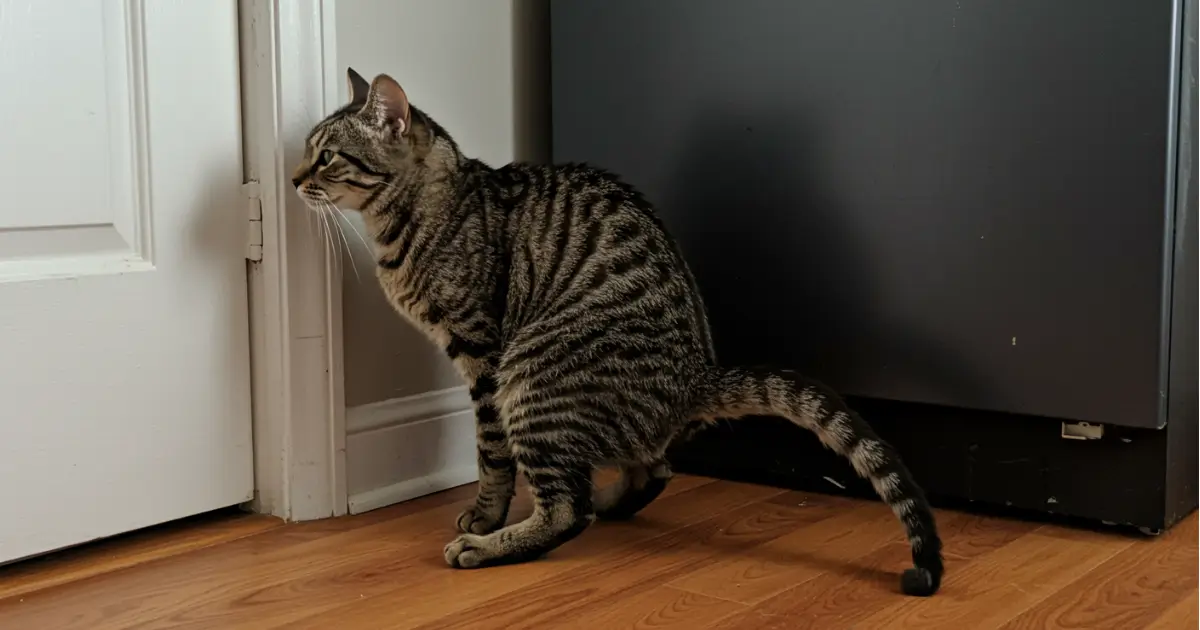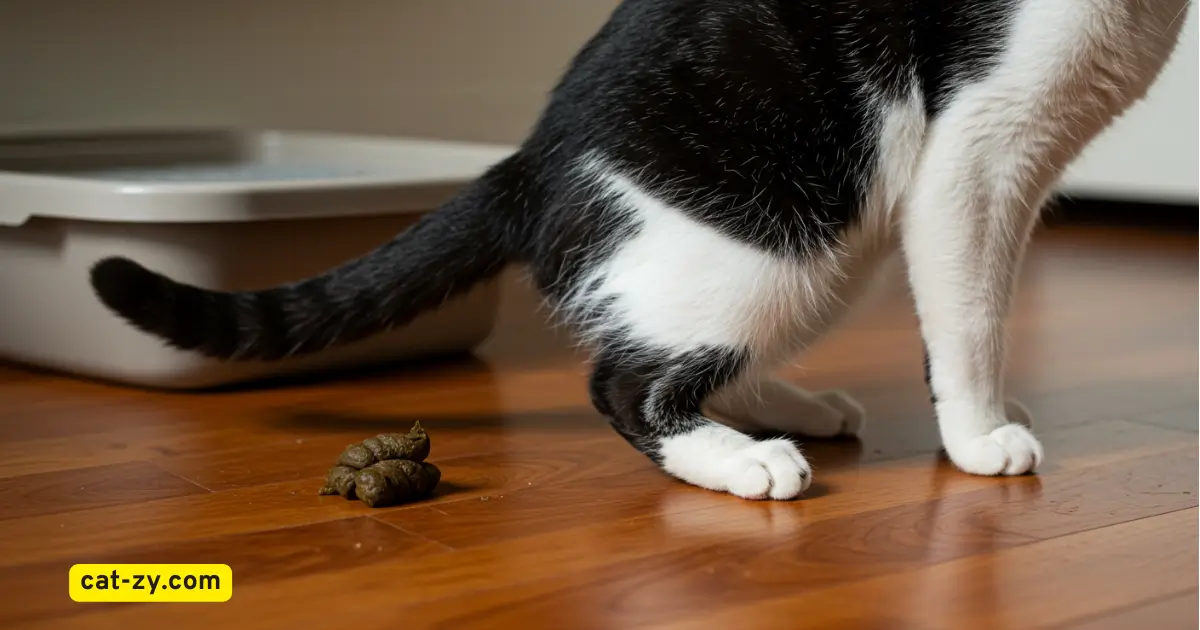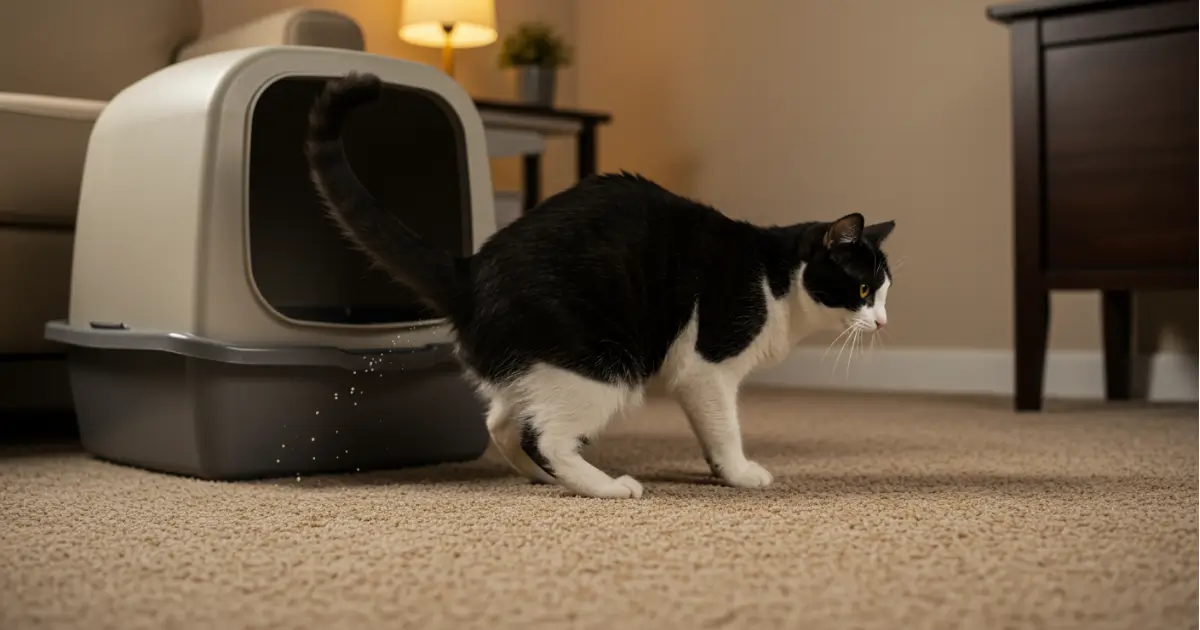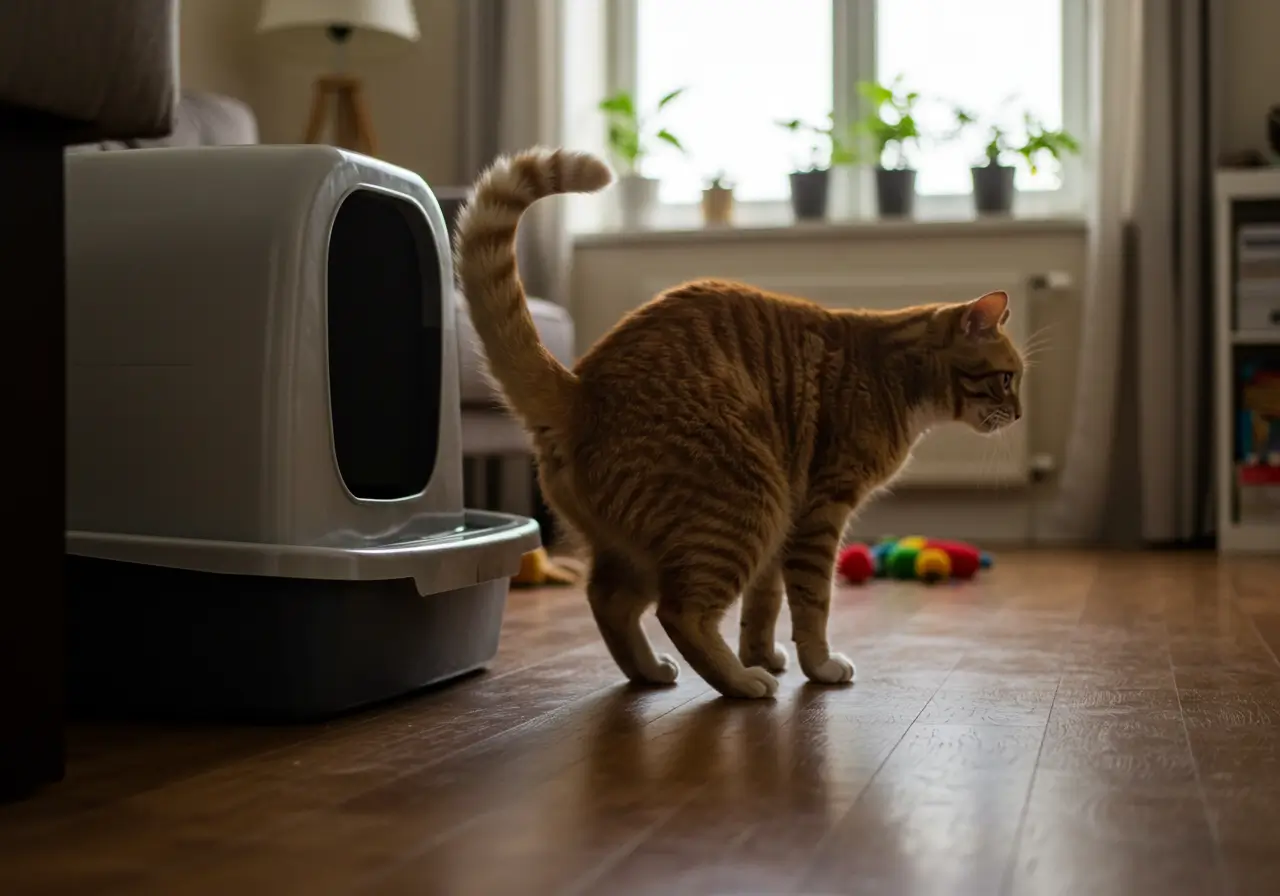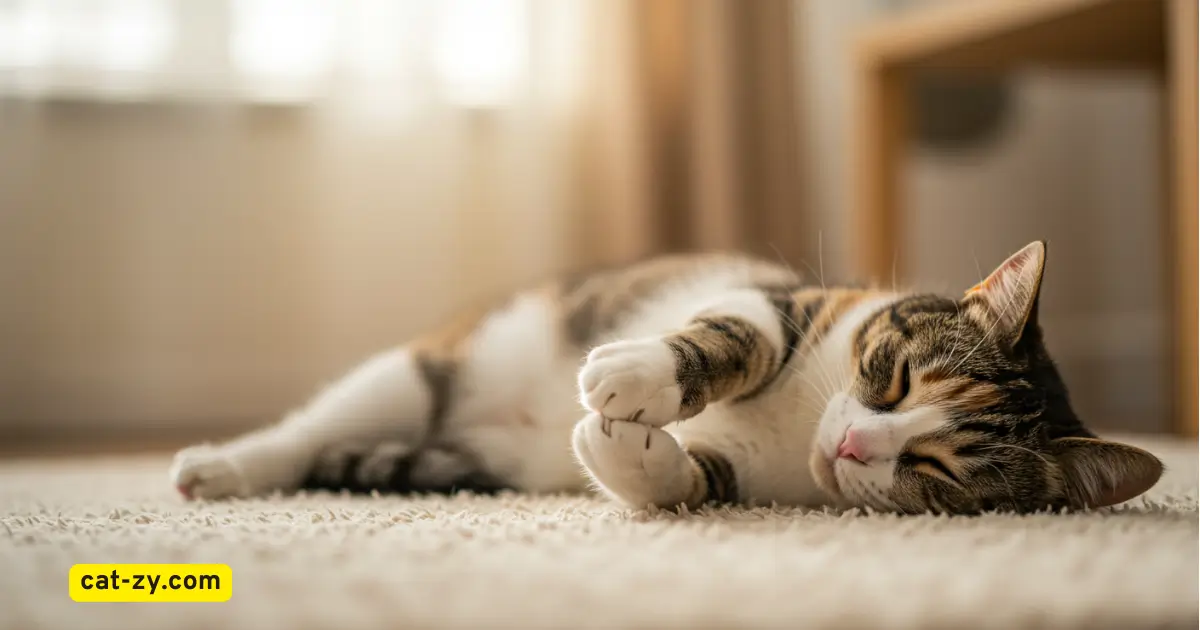7 Surprising Reasons for Cat Peeing Everywhere: Solving Behavioral Causes
Has your once perfectly litter-trained feline friend suddenly started leaving unwelcome puddles around your home? Finding cat pee on your favorite rug, sofa, or even your bed can be frustrating and confusing. If you’re wondering ‘why is my cat suddenly peeing everywhere?’ you’re not alone. This common issue of cat peeing everywhere affects many households and often leads to strained relationships between cats and their owners.
Before you reach the end of your patience, it’s important to understand that cats don’t urinate outside their litter box to spite you. In fact, this behavior is your cat’s way of communicating something important. By decoding these messages and addressing the underlying causes, you can restore harmony to your home and strengthen your bond with your feline companion.
In this comprehensive guide, we’ll explore the behavioral and environmental factors that can lead to cats peeing outside the litter box. From territorial marking to litter box aversions, we’ll dive deep into the fascinating world of feline behavior and provide practical solutions to address this challenging issue.
Table of Contents
Understanding Cat Behavior: Why Your Cat is Peeing Everywhere in the House
Decoding Feline Communication Through Urine
Cats are complex creatures with sophisticated communication systems. While we humans rely primarily on verbal language, cats use a combination of vocalizations, body language, and scent marking to express themselves. Urine marking is one of the most powerful ways cats communicate, and understanding this behavior is key to solving inappropriate urination problems.
“When cats urinate outside the litter box, they’re not being spiteful—they’re trying to tell you something important about their environment or emotional state.” – Feline Behavior Expert
Territorial Marking vs. Inappropriate Urination
First, it’s crucial to distinguish between two different behaviors that might look similar to us:
| Behavior | Description | Common Locations | Amount of Urine | Body Position |
|---|---|---|---|---|
| Territorial Marking | Communication method to establish boundaries | Vertical surfaces, windows, doors, new items | Small amounts | Standing with tail raised and quivering |
| Inappropriate Urination | Elimination outside the litter box due to preference or aversion | Horizontal surfaces, beds, rugs, corners | Normal amount | Squatting position |
When cats mark territory, they typically spray a small amount of urine on vertical surfaces. This behavior is most common in unneutered males but can occur in any cat, especially in multi-cat households or when outdoor cats are visible through windows. The purpose is to announce their presence and claim space as their own.
On the other hand, inappropriate urination typically involves normal amounts of urine deposited on horizontal surfaces. This usually indicates a problem with the litter box itself or significant stress in the cat’s environment.
Stress and Anxiety as Triggers
One of the most common reasons for cat peeing everywhere in the house is stress and anxiety. Cats are naturally drawn to routines and feel most comfortable when their daily lives are predictable. When their world becomes unpredictable or threatening, they may respond with inappropriate urination.
Common stress triggers include:
- Environmental changes: Moving to a new home, renovations, or even rearranging furniture
- Social changes: New family members (human babies, other adults) or pets
- Routine disruptions: Changes in your work schedule, vacations, or hosting guests
- Sensory stressors: Loud noises, strong odors, or visual threats (seeing neighborhood cats through windows)
Case Study: Bella’s New Baby Stress
Bella, a 7-year-old tabby, had perfect litter box habits until her owners brought home a newborn baby. The new sounds, smells, and changes in attention led Bella to start urinating on the baby’s nursery rug. By creating a quiet sanctuary for Bella, maintaining regular playtime, and using feline pheromone diffusers, her owners were able to help her adjust to the new family member without inappropriate urination.
The Role of Territory: Multi-Cat Dynamics
Cats are naturally territorial creatures, and in multi-cat households, territorial disputes can lead to marking behaviors. When cats feel their territory is threatened, they may respond by leaving their scent in strategic locations.
Signs of territorial tension between cats include:
- Hissing, growling, or fighting
- Chasing or stalking behavior
- One cat blocking another’s access to resources (food, water, litter boxes, resting areas)
- One cat always hiding while the other has free run of the house
Even cats that seem to get along may have subtle territorial issues that humans miss. Sometimes, the mere presence of outdoor cats visible through windows can trigger territorial marking indoors.
Pro Tip: To reduce territorial marking in multi-cat households, ensure each cat has their own resources (feeding stations, water bowls, resting areas) located in different parts of the home. This reduces competition and the need to assert dominance through marking.
Litter Box Management: The Foundation of Good Bathroom Habits
The Perfect Litter Box Setup
When asked “why is my cat suddenly peeing everywhere?”, many owners overlook the most obvious answer: the litter box itself. Getting your litter box setup right is often the quickest way to resolve inappropriate urination.
The Golden Rule: One Box Per Cat Plus One
The absolute minimum number of litter boxes you should have is one per cat, plus one extra. Therefore, when you have two cats, it’s best to provide three litter boxes. This ensures each cat always has access to a clean, available box.
Size Matters
Many commercial litter boxes are too small for cats to use comfortably. The box should be at least 1.5 times the length of your cat (not including the tail). For large cats, consider repurposing storage containers as litter boxes.
Location, Location, Location
Strategic placement of litter boxes can make a huge difference in whether your cat will use them:
- Privacy: Cats prefer some privacy when eliminating but also want to see if threats approach
- Accessibility: Boxes should be easy to reach, especially for senior cats or kittens
- Low Traffic: Avoid high-traffic areas or noisy appliances
- Multiple Levels: In multi-level homes, provide boxes on each floor
- Away from Resources: Boxes should not be near food, water, or sleeping areas
Common Litter Box Location Mistakes to Avoid:
- Placing boxes in noisy laundry rooms with startling washing machines
- Locating boxes near loud furnaces or water heaters
- Placing boxes in high-traffic hallways where cats feel vulnerable
- Hiding boxes in tight corners where cats feel trapped
- Forgetting to provide easy access for older cats or kittens
Litter Box Cleanliness is Key
The number one reason cats avoid their litter box is cleanliness. Cats are naturally clean animals, and many will refuse to use a dirty litter box, instead finding cleaner locations in your home.
Recommended Cleaning Schedule:
- Daily: Scoop all boxes at least once daily (twice is better)
- Weekly: Change clumping litter completely or top off as needed
- Monthly: Empty box entirely, wash with mild soap (not strong-smelling cleaners), dry thoroughly, and refill with fresh litter
Remember that what seems “clean enough” to humans may still be offensive to a cat’s sensitive nose. If your cat is peeing everywhere in the house, try increasing your cleaning frequency to see if that resolves the issue.
Litter Preferences: Finding What Your Cat Loves
Cats can be surprisingly picky about their litter material. What feels good under one cat’s paws may be completely unacceptable to another.
Common Litter Types:
- Clumping Clay: Most popular, provides good odor control, easy to scoop
- Non-Clumping Clay: Less dust, less tracking, but harder to keep completely clean
- Crystal/Silica: Excellent odor control, less tracking, but some cats dislike the texture
- Natural Options: Paper, corn, wheat, grass, wood—good for cats sensitive to dust
- Recycled Paper: Low dust, gentle on paws, environmentally friendly
Litter Preference Testing
If you suspect your cat dislikes their litter, try a simple preference test. Set up identical boxes side by side with different litter types and see which your cat prefers.
Pro Tip: When changing litter types, do so gradually by mixing increasing amounts of the new litter with decreasing amounts of the old over a period of 7-10 days.
Litter Box Aversion: When Bad Experiences Lead to Avoidance
Sometimes cats develop negative associations with their litter box due to past experiences. These can include:
- Pain while using the box (even if the medical issue is resolved)
- Being startled by loud noises while in the box
- Being ambushed by another pet while using the box
- Getting stuck in a covered box or one with a door
Once these negative associations form, cats may avoid the litter box completely, choosing to urinate in locations they perceive as safer. Breaking this cycle requires patience and sometimes a complete litter box “reset” with new boxes, new locations, and positive reinforcement.
Environmental Enrichment: The Key to a Content Cat
Creating a Stimulating Indoor Environment
Boredom and lack of mental stimulation can contribute to stress-related inappropriate urination. Enriching your cat’s environment can reduce stress and minimize marking behaviors.
Essential elements of an enriched cat environment include:
- Vertical Space: Cat trees, shelves, or window perches allow cats to observe their territory from safe heights
- Scratching Surfaces: Multiple scratching posts with different materials (sisal, carpet, cardboard)
- Interactive Toys: Puzzles, battery-operated toys, and items that stimulate hunting behaviors
- Play Sessions: Daily interactive play with wand toys or laser pointers (always end with a “catchable” toy)
- Foraging Opportunities: Food puzzles that make cats work for treats mimic natural hunting behaviors
- Rotation: Regularly rotating toys keeps the environment novel and interesting
The Indoor Hunting Feeder Concept
Instead of feeding from a bowl, consider using indoor hunting feeders—small containers that you fill with dry food and hide around your home. This engages your cat’s natural hunting instincts and provides mental stimulation throughout the day.
Providing Safe Spaces and Retreats
For cats, security is paramount. Every cat needs access to hiding places where they can retreat when feeling threatened or overwhelmed. These safe spaces are particularly important in multi-cat households or homes with children or dogs.
Effective cat retreats include:
- High perches where other animals can’t reach
- Covered beds or cat caves
- Empty boxes with entrance and exit holes
- Under-furniture spaces (make sure these remain accessible during cleaning)
- Dedicated cat rooms or areas separated by baby gates
Ensure each cat in your household has multiple retreat options in different areas of your home. This is especially important if cat peeing everywhere in the house is related to inter-cat conflict or territorial issues.
Scent Enrichment: Calming Your Cat’s Environment
A cat’s world is primarily experienced through scent, and using this sense to create a calming environment can help reduce stress-related inappropriate urination.
Effective scent enrichment strategies include:
- Synthetic feline facial pheromones: Available as sprays, diffusers, or wipes, these mimic the calming pheromones cats deposit when they rub their faces on objects
- Catnip or silver vine: Though stimulating for some cats, these natural herbs can provide positive scent experiences
- Cat-safe plants: Cat grass, catnip, and cat thyme can provide enriching sensory experiences
- Maintaining scent continuity: During cleaning, leave some items untouched to maintain familiar scents
Pro Tip: When using cleaning products to remove cat urine, avoid ammonia-based cleaners, which smell similar to urine and may actually encourage remarking. Instead, use enzymatic cleaners specifically designed for pet accidents.
Addressing Behavioral Changes and Solutions to Resolve Cat Pee Issues
Creating an Environment for Cats to Thrive
To stop your cat from peeing everywhere, you’ll need to create an environment that meets all their physical and psychological needs. This holistic approach addresses the root causes of inappropriate urination rather than just trying to manage the symptoms.
The Complete Cat Environment Checklist:
- Appropriate number of clean, accessible litter boxes with preferred litter
- Feeding stations away from litter boxes
- Fresh water sources in multiple locations
- [Multiple scratching surfaces (both horizontal and vertical)
- Climbing opportunities (cat trees, shelves, perches)
- Hiding places and safe retreats
- Interactive toys and daily play sessions
- Visual enrichment (bird feeders outside windows, fish tanks, etc.)
- Calming pheromone products in key areas
- Consistent daily routine
By ensuring all these needs are met, you create an environment where your cat feels secure, stimulated, and less likely to mark territory or avoid the litter box.
Addressing Inter-Cat Conflict
One of the most challenging scenarios for cat owners is when inappropriate urination stems from conflict between cats. Even subtle tension that humans don’t notice can lead to significant stress and marking behaviors.
Signs of Inter-Cat Conflict:
- One cat blocking another’s path
- Staring, hissing, or growling
- Swatting or chasing
- One cat always on high perches while another stays low
- Taking turns using common areas rather than sharing space
Conflict Resolution Strategies:
- Separate Resources: Ensure each cat has their own food, water, litter boxes, and resting areas
- Create Vertical Territory: Add cat trees and shelves so cats can share space without direct confrontation
- Positive Association: Feed cats on opposite sides of a door or baby gate to create positive associations with each other’s presence
- Controlled Introduction/Reintroduction: If tension is severe, you may need to separate cats completely and gradually reintroduce them
- Scent Exchange: Swap bedding or use a clean cloth to gently rub one cat and then the other to mix scents
Pro Tip: Sometimes what appears to be a litter box problem is actually a relationship problem between cats. By improving their relationship, the inappropriate urination often resolves on its own.
Practical Solutions: Stop Your Cat Peeing Everywhere
Cleaning Cat Urine Effectively
When dealing with cat peeing everywhere in the house, proper cleaning is essential. Cat urine contains proteins that regular household cleaners can’t fully eliminate, and any lingering scent can attract cats back to the same spot.
Step-by-Step Urine Cleaning Process:
- Blot fresh urine with paper towels to remove as much liquid as possible
- Rinse the area with clean water and blot again (for carpets and upholstery)
- Apply an enzymatic cleaner specifically designed for pet urine
- Let the enzyme cleaner sit for the time specified on the product (usually 10-15 minutes)
- Blot dry or allow to air dry completely
- Repeat if necessary for set-in stains
- For persistent areas, use a blacklight to ensure all urine has been identified and treated
For fabrics that can be washed, add a cup of white vinegar to the wash cycle along with your regular detergent to help neutralize odors.
Deterrents and Attraction
Once you’ve cleaned affected areas, you may want to make them less attractive for urination while simultaneously making the litter box more appealing.
Making Problem Areas Less Appealing:
- Place aluminum foil or plastic carpet runners (nubby side up) over cleaned areas
- Use citrus-scented deterrents (cats typically dislike citrus scents)
- Block access to problem areas temporarily if possible
- Feed, play with, or place treats in previously soiled areas to change the association
Making Litter Boxes More Attractive:
- Keep them scrupulously clean
- Use a litter attractant product mixed with regular litter
- Ensure easy access and privacy
- Place boxes in calm, low-traffic areas
- Try different box types (covered vs. uncovered) to determine preference
When to Seek Professional Help
If you’ve tried these solutions and your cat is still peeing everywhere in the house, it may be time to consult professionals:
- Veterinary Behaviorist: These specialists can assess your specific situation and create a tailored behavior modification plan
- Certified Cat Behavior Consultant: Expert in feline behavior who can identify subtle environmental factors you might have missed
- Professional Animal Communicator: Some owners find alternative approaches helpful when conventional methods haven’t worked
Conclusion: Patience and Persistence Pay Off
Dealing with a cat peeing everywhere requires detective work, patience, and consistent implementation of solutions. Remember that this behavior developed over time, and it may take time to resolve completely.
The good news is that most cases of inappropriate urination can be successfully addressed once you identify and resolve the underlying cause. By understanding your cat’s natural behaviors and needs, you’re not just solving a problem—you’re strengthening your relationship and improving your cat’s overall quality of life.
Have you successfully resolved inappropriate urination issues with your cat? What solutions worked for you? Share your experiences in the comments below to help other cat owners facing similar challenges.

